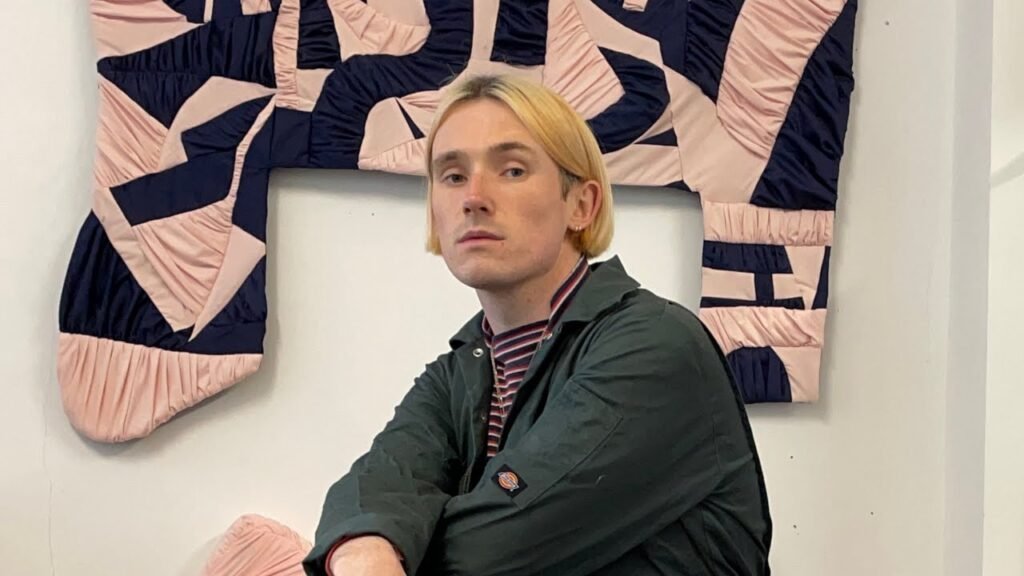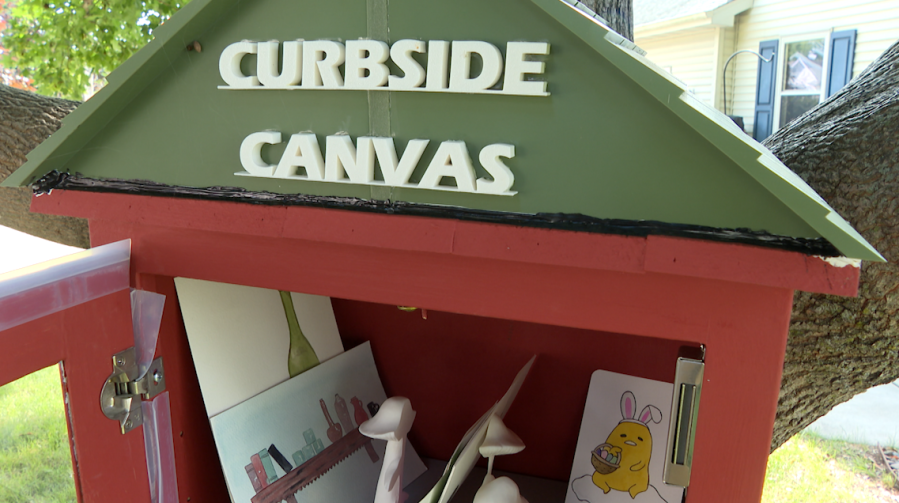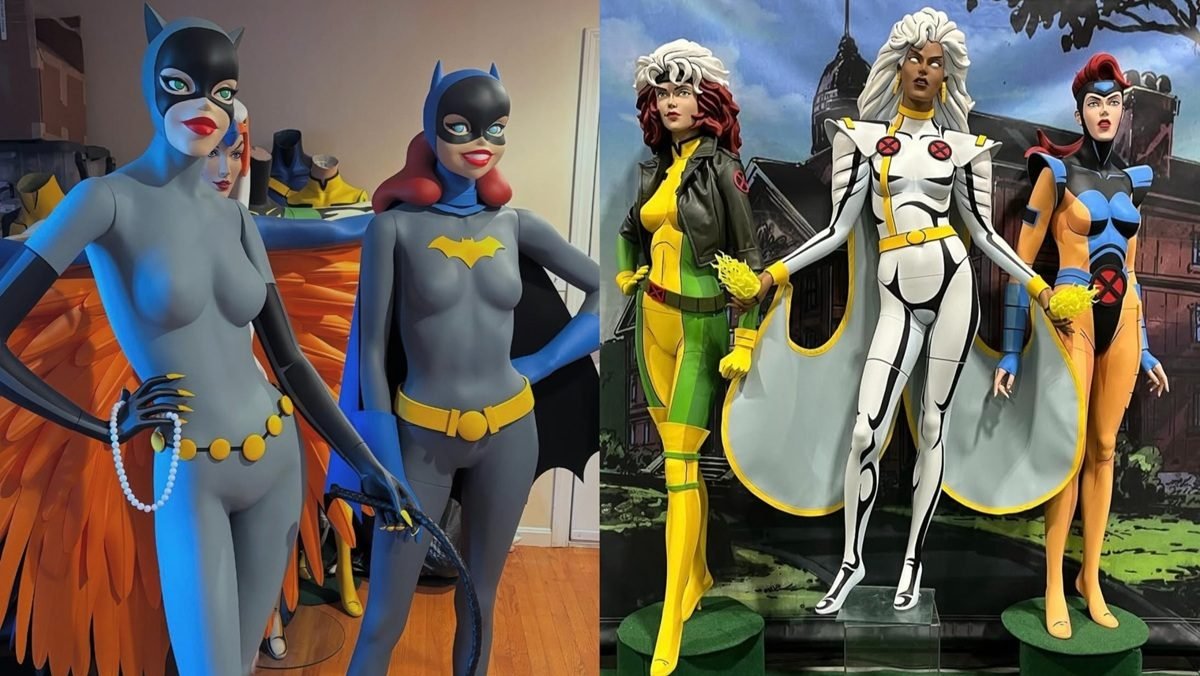Malone says that they are comfortable “transitioning between worlds”, and, despite resistance in some quarters to their material sculptures, having major institutions come on board provides a sense that they are going in the right direction.
“It’s great that they are open because for a long time, people weren’t very open to something that was cross-disciplinary, so I feel very lucky,” they say. “It feels that my work sits between two worlds quite comfortably now and even different parts of a museum can understand it and have a reason for putting it in a show.”
How we acknowledge, value or document the people who make things is of interest to Malone who conceptualises but also physically makes their fabric pieces. They speak of the pieces commissioned by The Met Museum in New York for example. which were displayed alongside pieces by Grès, Brancusi, Worth, Schiaparelli and Charles James.
“I made the pieces that I designed for the exhibition myself – that’s what I do, I stitch and sew,” they say. “And I thought it was interesting to see how things are documented. Obviously, my name was beside my objects and that connects me with the labour of my family. But there are brands in there where the designer who’s credited for the work has not sewn the work [themselves] so there is a whole section of people who’ve made the clothing [but whose names are not documented] so it’s not really truthful of who made the clothes.”
Visitors to A Record of Tenderness will see various techniques and materials employed. There are painting techniques and drawings that have stitch or builder’s chalk used as mark-making tools and welded steel that is sewn together and draped like “abstract brushstrokes”. All the lighting has been removed from the space so that the exhibition changes throughout the day.
For Malone, it is important to utilise and celebrate the skills and techniques they learned while working on building sites with their father and to allow “working-class labour” and their personal history growing up with a “complex queer identity” in a working-class environment to “take centre stage and fill the space”.
“It is not about showing images of working-class people and fetishising what it is [to be working-class]. It is to celebrate it and accept it as something I grew up around and which became a tool for me because that’s what I know how to do. The skills that I use haven’t really changed very much and have come from that early relationship to labour.”
They speak about solidarity between members of the working class and queer culture as seen in the ‘Queers Support the Miners’ campaign during the UK miners’ strike in the 1980s. “I’m sure there was animosity on both sides coming from such different cultures but they got along because they understood the importance of everyone having the same rights,” says Malone.
“When you talk about queerness and LGBTQ+ issues, people think it doesn’t relate to straight people but of course it does. It’s the same emotions or the same seeking for protection. It’s about having a space where we can understand each other. The world should exist for everyone.”
The work in this show begs the question, I say, about what skills are considered “art” or “craft” or otherwise; who art and art galleries are supposed to be for and which members of society are excluded from these institutions. Cost of entry is no barrier to the free exhibition at The Dock which will also run various workshops for the duration of the exhibition and Malone believes that the craft or labour on display in the show make it accessible for everyone.
“The labour in the show is very true to the Ireland I grew up in and I think it’s important to make a space where that is celebrated in the same way that sculpture in stone or steel is. Regardless of all of the conceptual reasoning, the labour is a way in – people understand when something is sewn well or painted well.”
Increasingly eschewing the “falseness” of social media, Malone is keen for people to spend time with the exhibition and to think about the research that led to it. “I don’t want it to be just an exhibition that looks sexy in pictures on Instagram,” they say. “You’re very welcome to hate it but I think it is a truthful expression of what I like to do and I am grateful that it is not just in Dublin and that it is serving a community that isn’t always served in the way that cities are.”
In terms of their own LGBTQ+ community, Malone hopes that their research and consequent work ignite a spark of curiosity and creativity: “There is a real overlap between class and queerness that I have found through my research at various institutions, so I hope it sparks a bit of curiosity in the queer community to research, make work, respond and feel that they can take up space in a way that can be completely new and true to their experience.”
Richard Malone A Record of Tenderness runs until October 5 2024 at The Dock in Carrick-on-Shannon, Leitrim.
Acknowledgements:
Still photography: Ros Kavanagh.
Film credits: Richard Malone, Director; Ronnie McQuillan, Cinematographer; Freya Morris, Creative Producer; Cian Redmond, Lighting Assistant/Best Boy; Sonny Mihajlovic, Gaffer; Ezra Lloyd Jackson, Fabrication Assistant; Adam Farrell, Fabrication and Set Assistant.
Performers: Philip Connaughton; Valerie Ebuwa; Ryan Munroe; Isabella Oberlander; Fearghus Ó Conchúir; Ben Sullivan.
A Record of Tenderness is supported by The Arts Council of Ireland Visual Arts Project Award 2024. The exhibition is curated by Linda Shevlin and Mary Conlon, and produced by Laura Mahon and Ray Duffy, with thanks to Terry Markey and the Leitrim Sculpture Centre for technical support.






